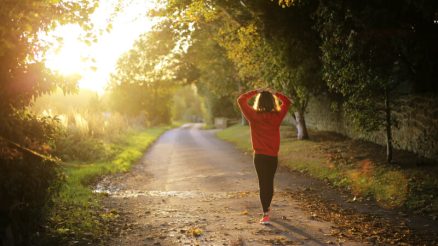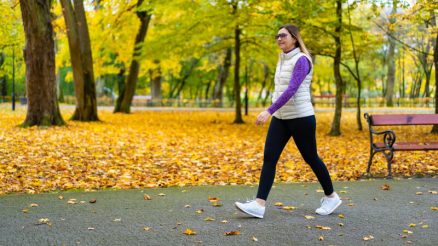In our fast-paced modern world, stress and anxiety have become unwelcome companions for many. The relentless demands of work, personal life, and constant digital connectivity can leave us feeling overwhelmed, on edge, and mentally exhausted. While there’s a myriad of coping mechanisms and professional therapies available, one of the simplest, most accessible, and profoundly effective methods for managing these feelings is often overlooked: walking.
It might seem too simple, but the act of putting one foot in front of the other can be a powerful antidote to mental distress. Let’s delve into the scientific and psychological reasons why a daily stroll can be your personal stress-buster.
The Science of Striding Towards Calm
Walking isn’t just physical exercise; it’s a profound physiological and psychological intervention.
1. The Endorphin Rush: Nature’s Own Antidepressant
When you walk, especially at a moderate pace, your body releases endorphins—neurotransmitters that interact with the receptors in your brain to reduce your perception of pain and trigger a positive feeling in the body, similar to that of morphine. This “walker’s high” can significantly improve mood, reduce feelings of stress, and even alleviate symptoms of depression. Regular physical activity, like walking, also helps regulate cortisol, the primary stress hormone, bringing its levels back into balance.
2. Mindful Movement and Distraction
Walking provides a gentle yet effective form of distraction from the循环 of worrisome thoughts. When you focus on the rhythm of your steps, the sensations of your body, or the environment around you, you pull your attention away from internal anxieties. This isn’t just avoidance; it’s a form of active mindfulness. As you pay attention to the sights, sounds, and smells of your walk, you engage your senses, grounding you in the present moment and reducing rumination about past regrets or future fears.
3. Connecting with Nature: The Biophilia Effect
Studies have consistently shown that spending time in natural environments—whether a park, a forest, or even a tree-lined street—can significantly lower stress levels. This phenomenon, sometimes referred to as the “biophilia effect,” suggests that humans have an innate tendency to connect with nature. Walking outdoors exposes you to natural light, which can regulate your circadian rhythm and improve sleep quality (a critical factor in managing anxiety). The fresh air and natural scenery can also have a calming effect, reducing blood pressure and heart rate.
4. Improved Sleep Quality
Anxiety often disrupts sleep, creating a vicious cycle where poor sleep exacerbates anxiety, and anxiety prevents restful sleep. Regular walking can break this cycle. By expending energy during the day, you promote deeper, more restorative sleep at night. Furthermore, the exposure to natural light during daytime walks helps regulate your body’s internal clock, signaling to your body when it’s time to be awake and when it’s time to wind down.
5. A Sense of Control and Accomplishment
In times of stress and anxiety, we often feel a loss of control. Committing to and completing a walk, no matter how short, provides a tangible sense of accomplishment. It’s a small victory that can build self-efficacy and remind you that you are capable of taking positive action for your well-being. This sense of agency can be incredibly empowering when feeling overwhelmed.
Practical Steps to Walk Your Way to Wellness
Ready to lace up? Here are a few tips to integrate walking into your routine:
- Start Small: You don’t need to walk a marathon. Even 10-15 minutes a day can make a difference. Gradually increase duration and intensity as you feel comfortable.
- Make it a Habit: Consistency is key. Try to walk at the same time each day to establish a routine.
- Explore Your Surroundings: Discover new routes in your neighborhood or local parks. Novelty can keep things interesting.
- Leave Your Phone Behind (or on Silent): Unless for emergencies or navigation, try to disconnect from digital distractions and truly immerse yourself in your walk.
- Walk with Purpose, or Not: Sometimes a brisk walk is energizing. Other times, a slow, meandering stroll where you absorb your surroundings is exactly what you need.
- Buddy Up: Walking with a friend, family member, or even a pet can add a social dimension and provide accountability.
- Listen to Something Calming: If you prefer, listen to a calming podcast, an audiobook, or soothing music to enhance relaxation.
Conclusion
Walking is more than just a physical activity; it’s a simple yet profound tool for mental well-being. It’s accessible to almost everyone, requires no special equipment, and can be done almost anywhere. By incorporating regular walks into your life, you’re not just moving your body; you’re actively nurturing your mind, finding a path to greater calm, clarity, and resilience in the face of life’s challenges. So, step out the door and let each stride carry you closer to serenity.








